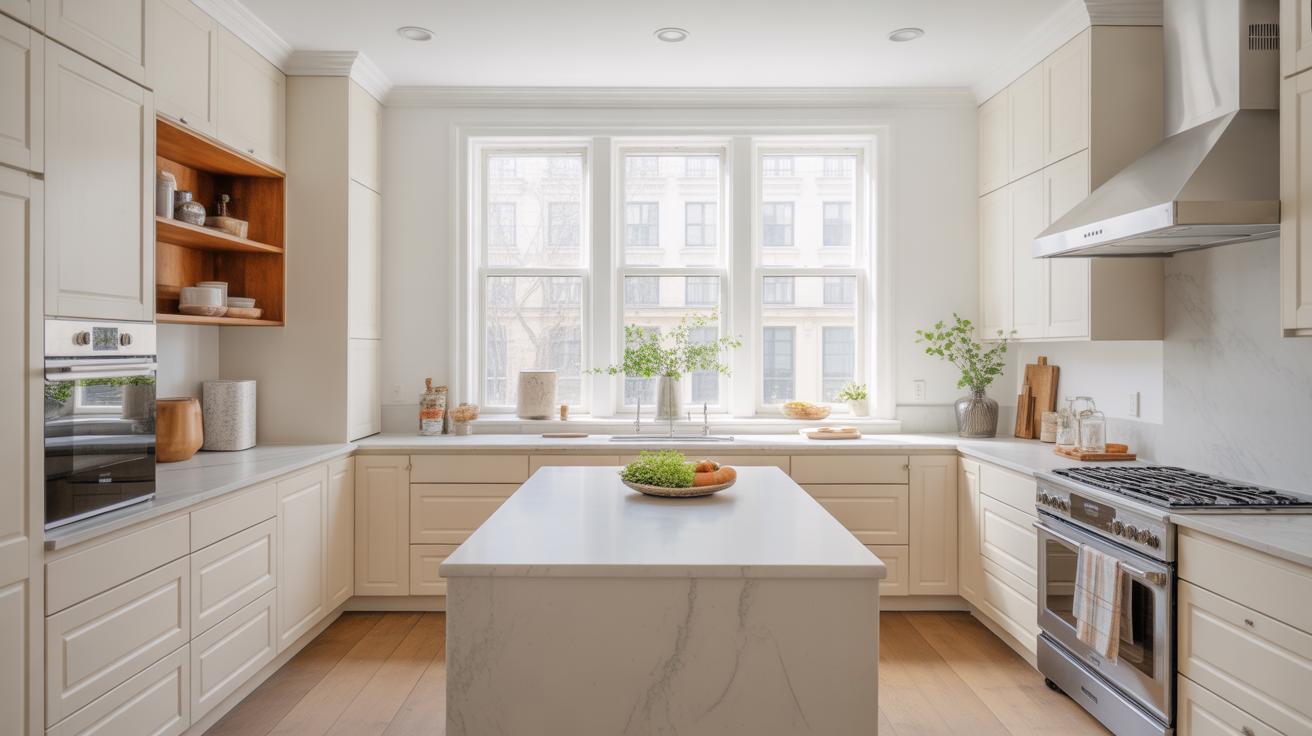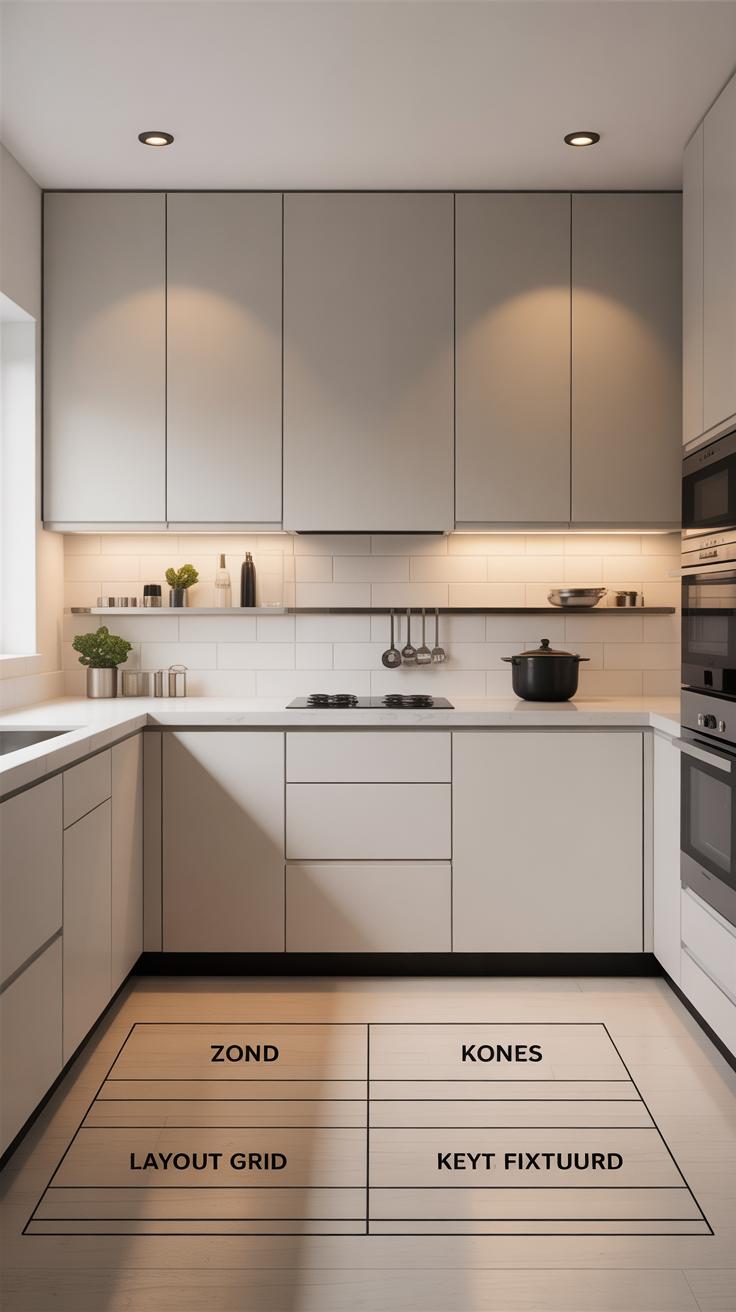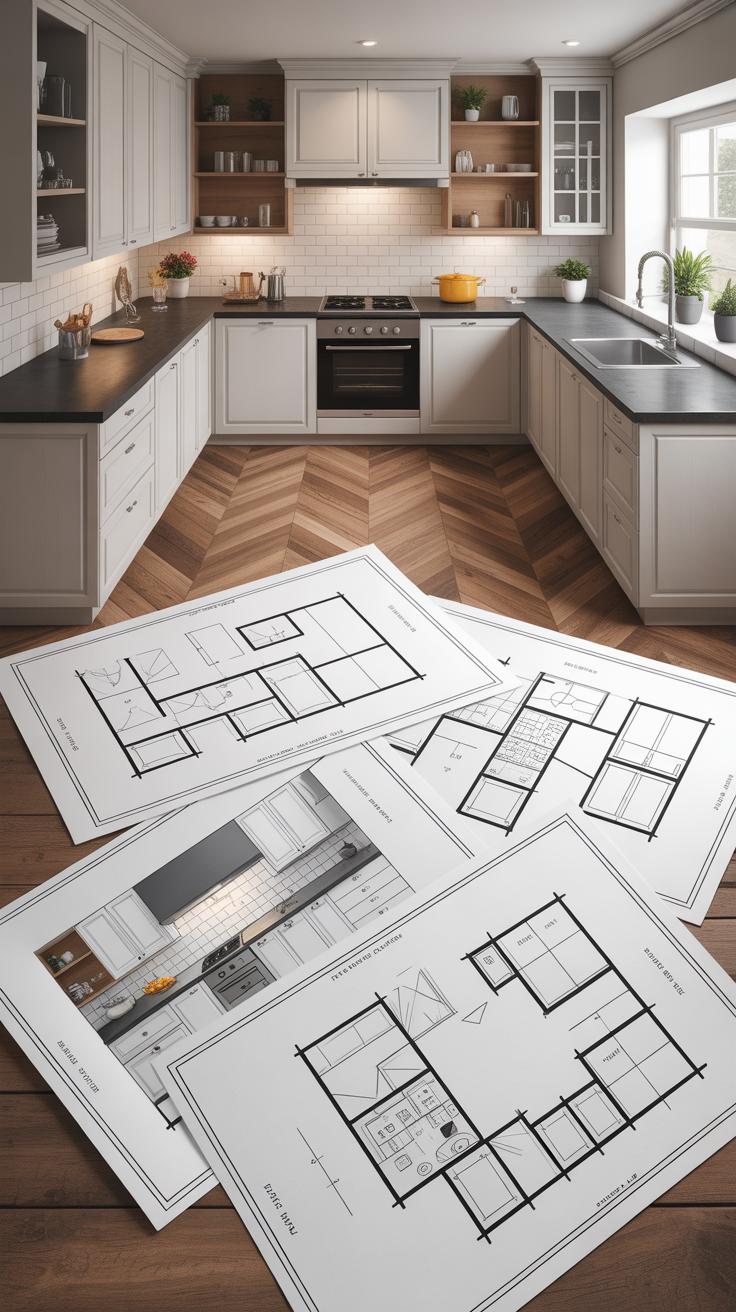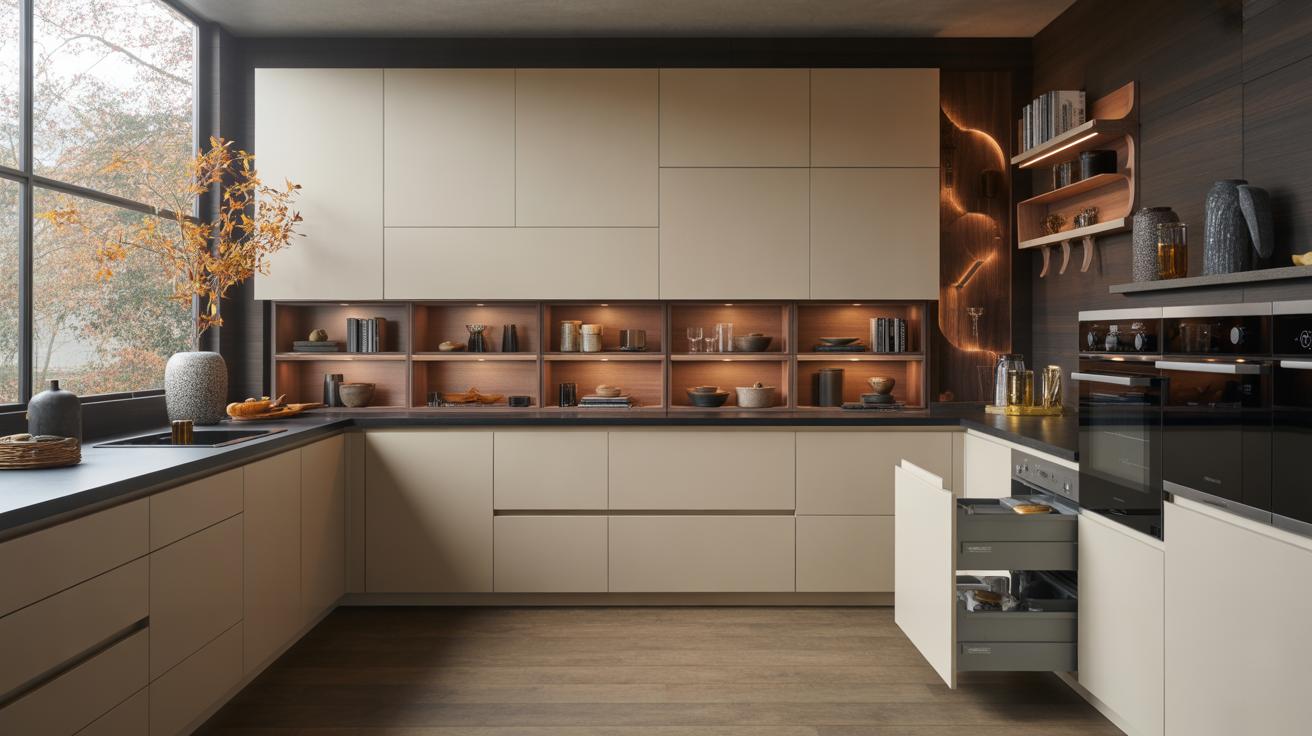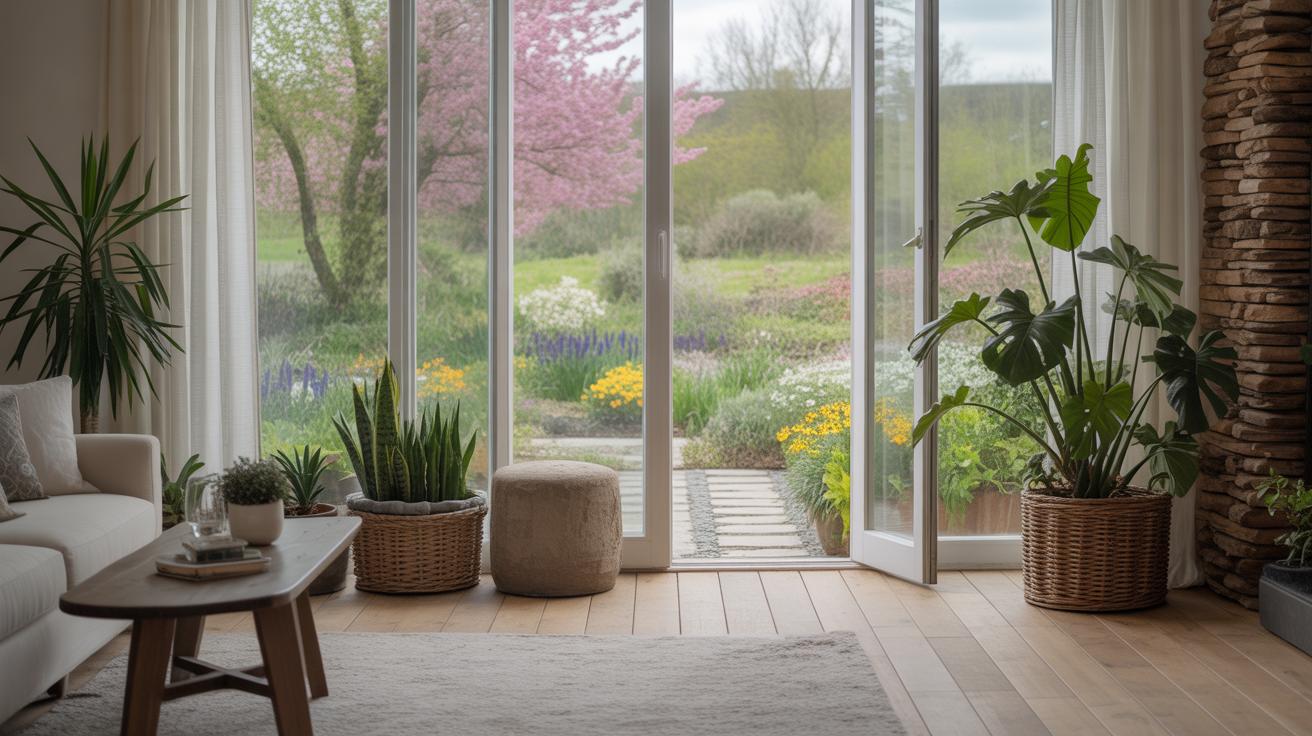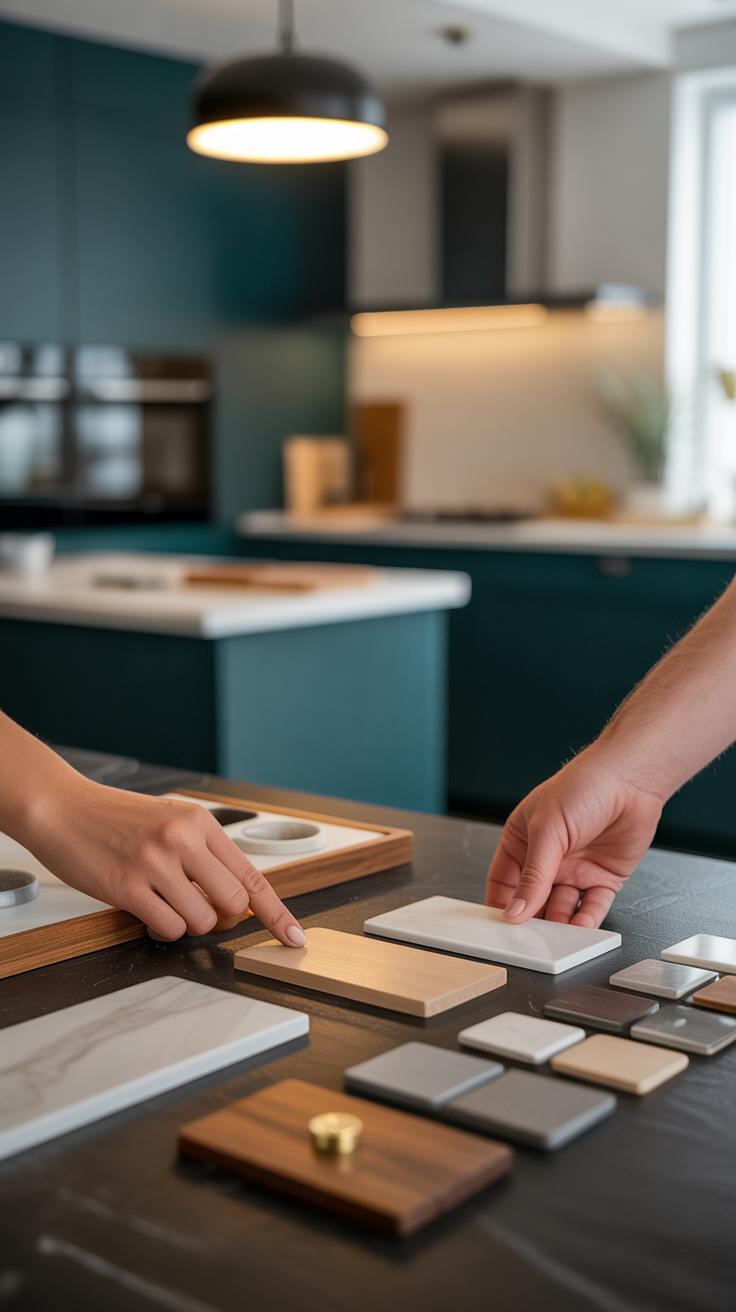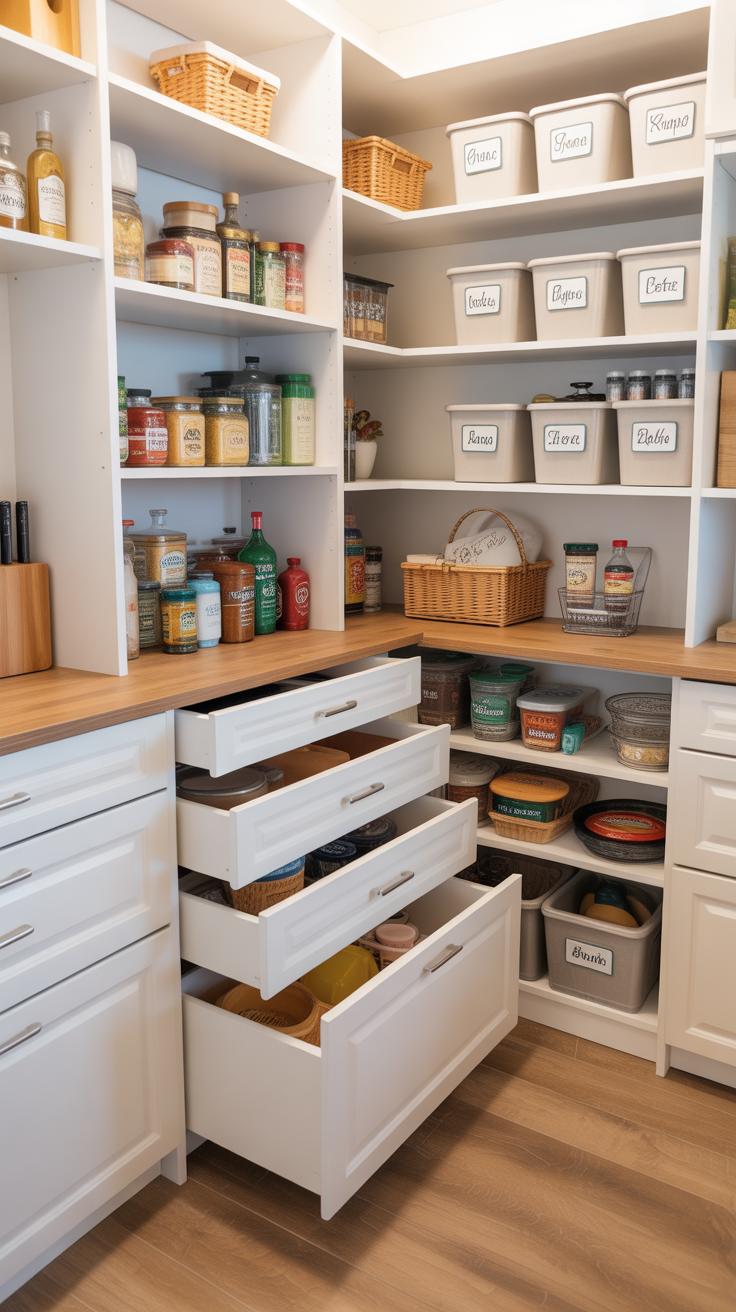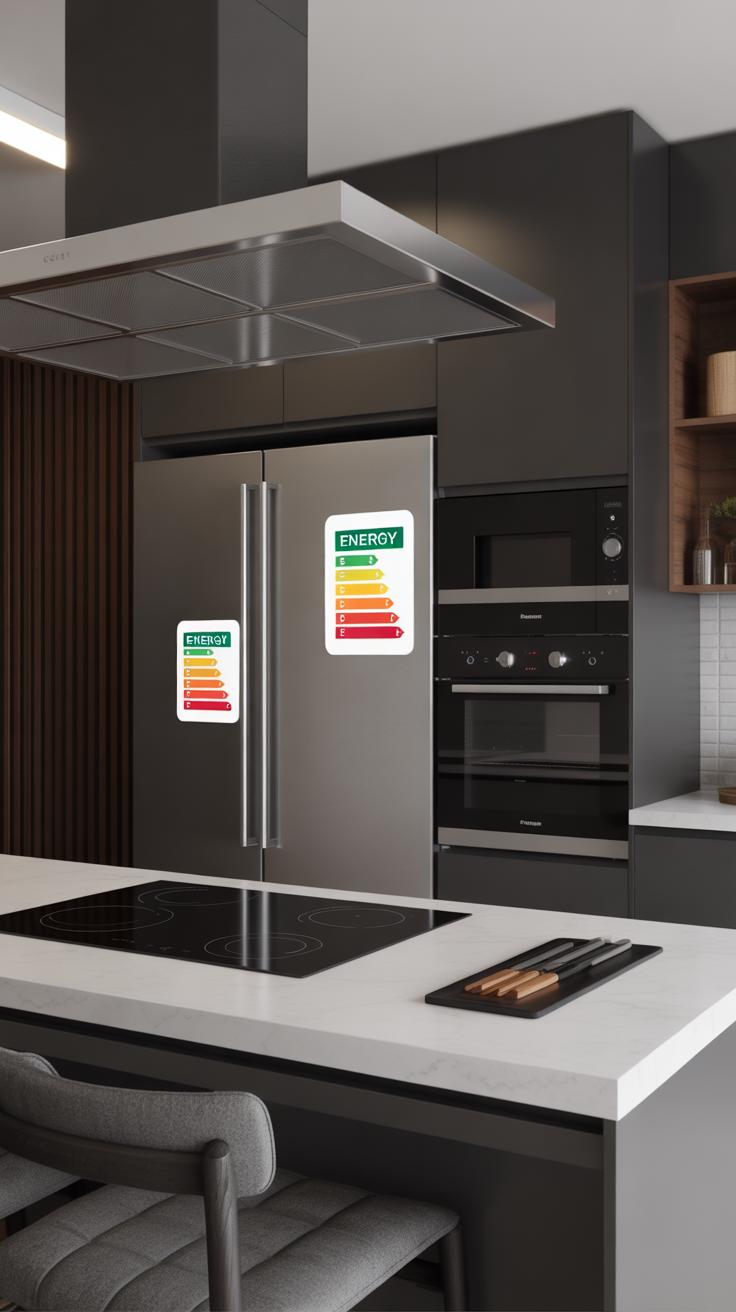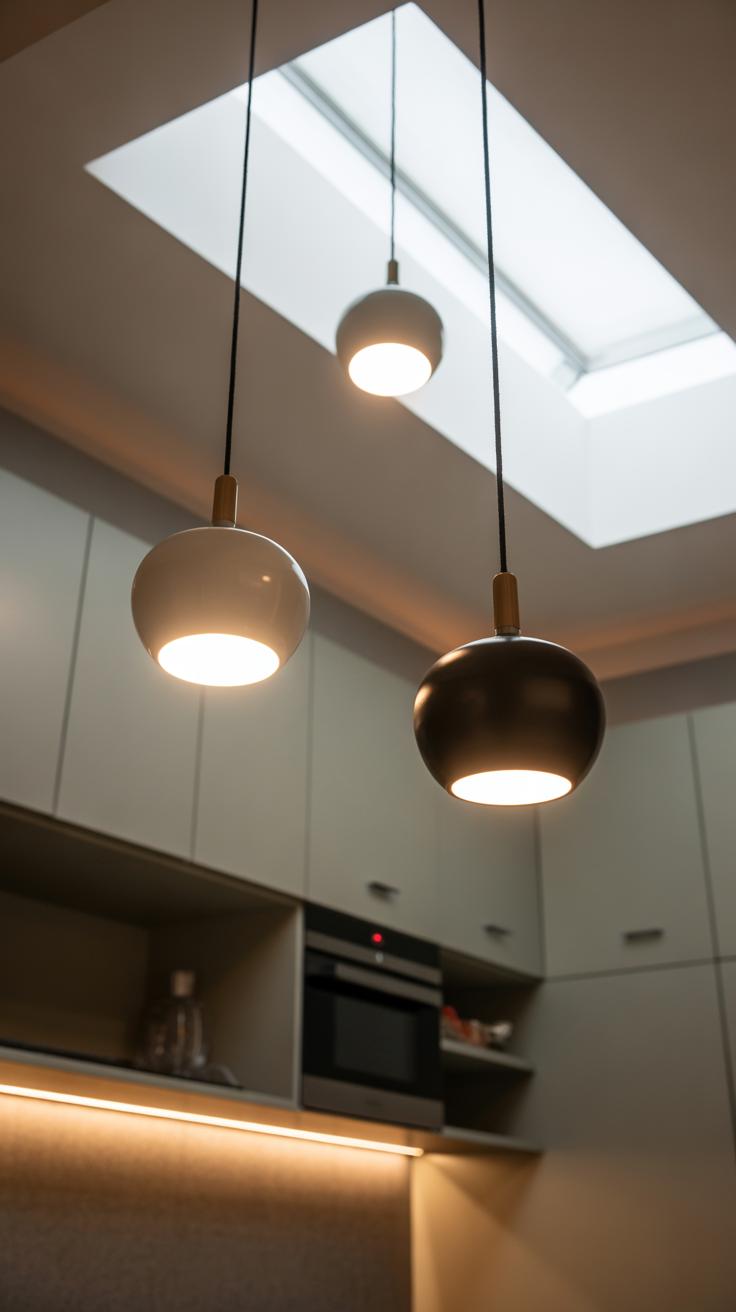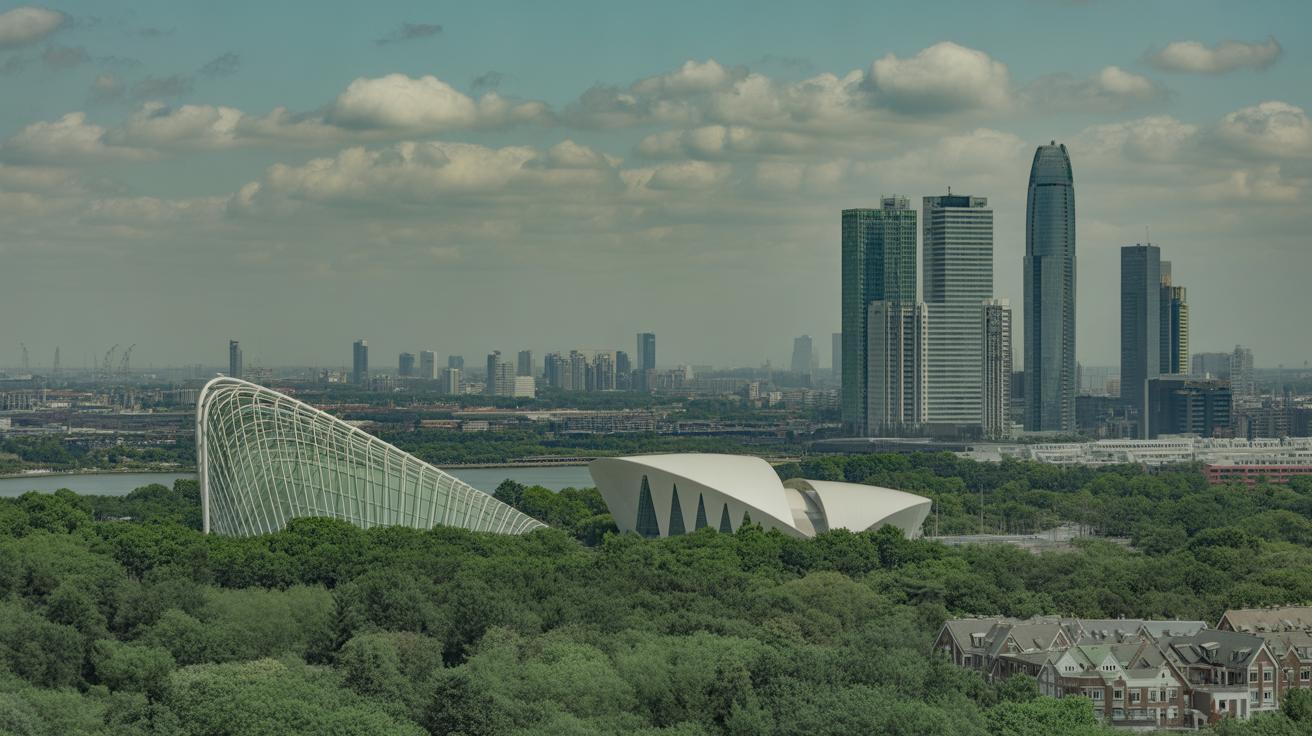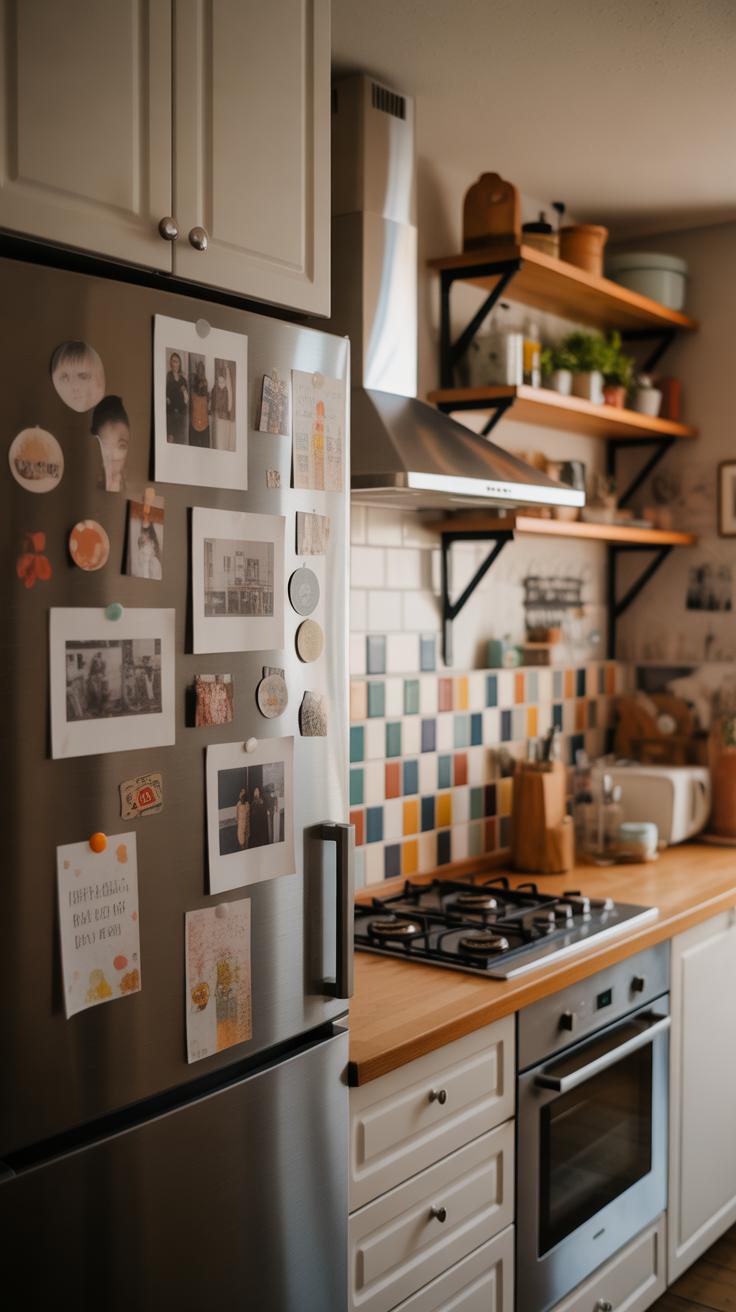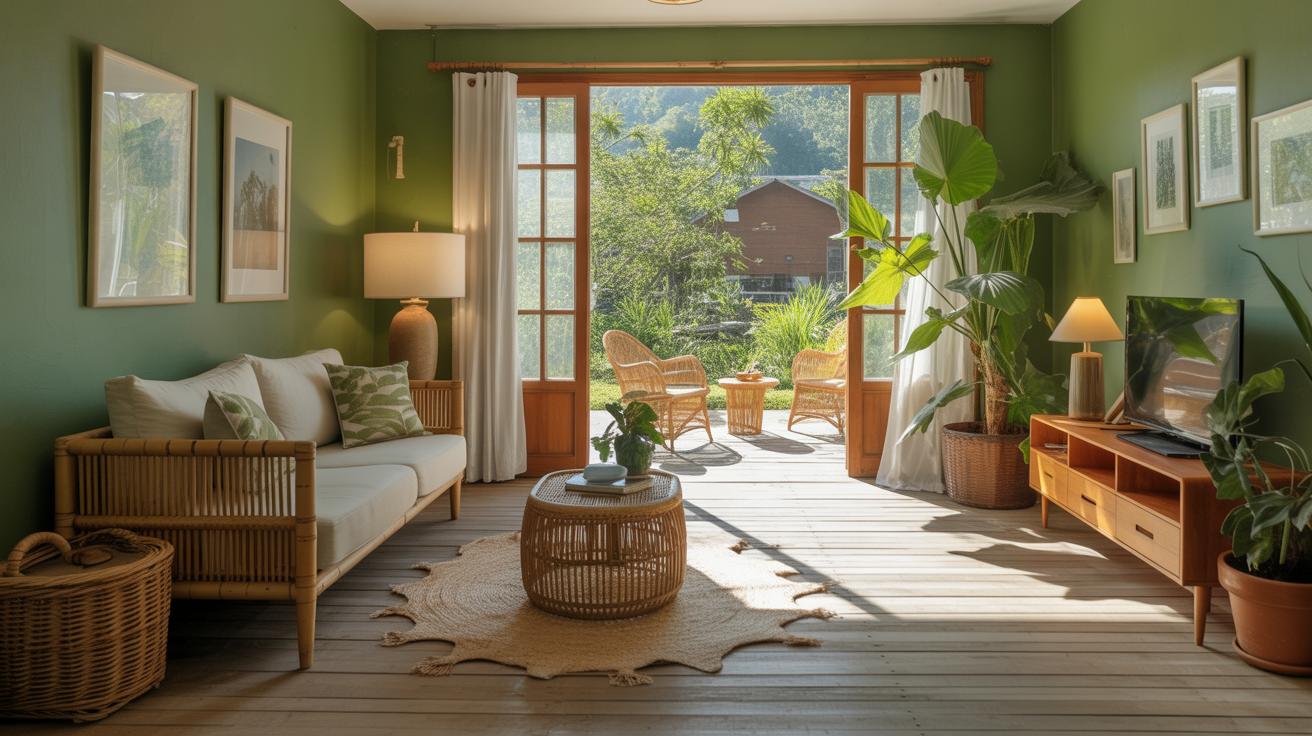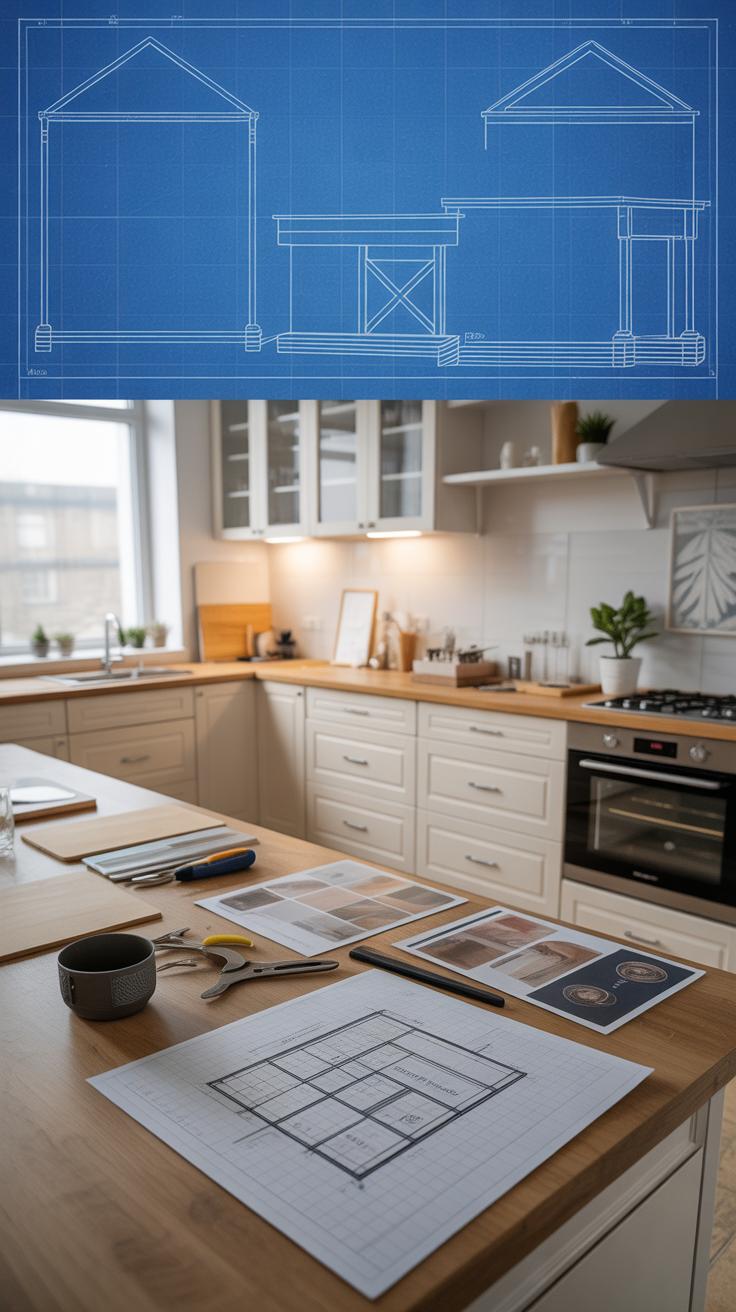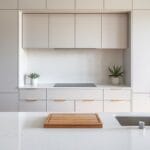Introduction
Modern kitchen design changes the way you experience your home. It is not just about looks but how your kitchen works for you. A well-designed kitchen makes cooking easier and more enjoyable. It fits your style and meets your needs.
This article looks at many ideas for modern kitchens. You will learn about smart layouts, materials, colors, and appliances. You will find advice to help you update your kitchen or create a new one that works perfectly for you and your family.
Understanding the Basics of Modern Kitchen Design
What Modern Kitchen Design Means
Modern kitchen design focuses on simplicity that doesn’t feel dull. It’s about cutting away unnecessary details while keeping everything practical and visually appealing. When you think about it, modern kitchens are not just about looks—they prioritize what actually works. You might find yourself relying on clean surfaces, easy-to-reach storage, and layouts that let you move without obstacles. Style matters, sure, but it’s the quiet balance between form and function that defines modern kitchens.
What Makes a Kitchen Modern
Certain features tend to pop up in kitchens you’d call modern. Clean lines stand out—no intricate carvings or ornate trims here. Open layouts often replace cramped spaces, giving a sense of airiness and freedom. You’ll notice minimal clutter; countertops don’t overflow with gadgets or utensils. Instead, things are tucked away or cleverly stored. Lighting tends to be straightforward, often with subtle fixtures rather than elaborate chandeliers. Surfaces—be it quartz, glass, or stainless steel—lean toward smooth and untextured.
Why Modern Design Works in Your Home
What’s appealing is that this style doesn’t just look fresh, it tends to make daily kitchen tasks easier. With less clutter and smarter storage, you waste less time hunting for tools or cleaning up. A modern kitchen also lets you personalize the space without it feeling crowded or inconsistent—you can mix in a pop of color or your favorite materials and still keep the overall look calm. Also, many find modern kitchens age well; they don’t feel dated fast, which might be why some people hesitate about trendy designs. It’s a style that’s both straightforward and inviting, even if it might feel a bit cold to some at first.
Choosing the Right Layout for Your Kitchen
When it comes to kitchen layouts, the choices often boil down to a few popular designs: L-shape, U-shape, and island kitchens. Each has its distinct way of shaping how you move, work, and even socialize in your kitchen. The L-shape layout wraps two walls at a right angle, leaving plenty of open space in the middle—quite handy for smaller to medium kitchens. It makes it easy to switch between cooking, prepping, and cleaning, but can be a bit limiting if you have a large family or like to cook with others.
The U-shape, encompassing three walls, offers more countertop and storage room. It’s great if you want everything within arm’s reach, but tight spaces can feel a bit boxed in, especially if more than one person tries moving around. You might find yourself bumping into things if the walkway is narrow.
Island kitchens add a freestanding counter somewhere near the center. They can become the hub for cooking, eating, and even chatting. Yet, this works best in larger kitchens—smaller spaces may feel cramped or awkward with an island in the mix.
What layout suits you depends quite a bit on your kitchen’s size, but also how you use it. Do you cook mainly for yourself, a partner, or a big family? Do you like having company while you cook, or prefer to keep things quiet and solitary? An island might be perfect for hosting and casual meals, while an L-shape might fit better if you’re after simplicity and openness.
Still, no layout is flawless. For example, while U-shapes offer storage galore, they can create corners that become dead zones. Islands look stylish, but can eat up space and require more upkeep. So, think about the trade-offs carefully—what you lose might be as important as what you gain.
In the end, trust your habits more than any rule. Try to picture yourself in the space throughout your day. Does the flow feel natural? Does it make prepping dinner easier or more of a chore? That sense might be the best guide when choosing your layout.
Selecting Materials and Finishes for a Modern Look
When thinking about materials for a modern kitchen, you often picture sleek surfaces and clean lines, right? Common options include wood, glass, metal, and laminates — each bringing something different to the table. Wood offers warmth and texture but can sometimes feel at odds with a purely modern vibe if overused. Glass, on the other hand, adds subtle shine and openness, especially on cabinet doors or backsplashes. Metal is tough and minimalist; stainless steel, for example, is a classic choice for appliances and fixtures that want to stay low-profile but shiny. Laminates can imitate other materials and keep costs down, but they vary widely in quality.
Countertops need to be tough while looking good. Quartz is a favorite because it resists scratches and stains while still feeling quite modern. Solid surfaces like Corian offer a uniform, almost seamless appearance that many find appealing. Granite, though natural and unique, can feel a bit traditional depending on the pattern. For cabinets, flat-front styles with matte or gloss finishes tend to feel fresher. Wood veneers add subtle warmth, especially if you like mixing natural elements with modern design.
Color choices can make or break the kitchen’s mood. White or light colors often open up space, making the kitchen seem clean and airy but maybe a bit plain. Dark hues introduce drama and can make the room feel cozier, though they might show smudges more easily. Soft pastels or muted tones can soften the industrial edge of metal and glass. Sometimes, a bold accent—like navy blue or forest green cabinetry—can bring personality without overwhelming. The real question is, what atmosphere do you want? Cool and minimal, warm and inviting, or somewhere in between?
Incorporating Smart Storage Solutions
Keeping your kitchen organized can feel like a challenge, especially in a modern space where clean lines and minimal clutter matter a lot. Smart storage solutions aren’t just about fitting more into your cabinets—they’re about making everything easier to find and access. Think about how often you rummage through drawers or cupboards—could it be less with some clever design?
Cabinet Features That Save Space
Pull-out shelves are a game changer. They let you reach items in the back without knocking everything over. Corner units often get wasted, but specialized rotating or swing-out mechanisms turn those awkward spaces into real storage spots. You might have seen some kitchens with tall cabinets that hide spice racks or trays that slide out vertically—it’s worth considering these subtle additions that can change how you organize your kitchen. I’ve tried corner pull-outs, and while they don’t hold literally everything, they definitely prevent those frustrating “can’t reach” moments.
Using Open Shelves and Hidden Storage
There’s a fine line between showing off your kitchen items and keeping the space calm. Open shelves offer a chance to display everyday dishes or decorative glassware, but too many can look cluttered or make your kitchen feel unfinished. Closed cabinets hide mess but can feel disconnected from the rest of the space. I think the best approach is mixing both—open shelves for items you use and love to see, like coffee mugs or plants, and hidden storage for things that tend to pile up or get messy, like pots or pantry staples. Balancing these feels like a personal choice more than a strict rule, depending on how you actually use your kitchen.
Choosing EnergyEfficient and Modern Appliances
Appliances shape much of what a kitchen is. They aren’t just tools; they define how you cook, clean, and even gather. When picking new appliances, thinking about energy-saving options isn’t just about lowering utility bills; it’s also about a quieter, cooler, and—well, maybe—an easier kitchen experience.
Look closely at energy ratings—they give you a reliable snapshot of how much power the appliance uses compared to others. Appliances with smart controls can adjust settings on their own, often using less energy without much effort on your part. Plus, multi-function devices can replace several single-use machines. For instance, a combination oven that also steams can save space and power, but sometimes such combos aren’t quite as good as dedicated versions. So, weighing what you truly need matters.
Size and style matter more than you might realize. A massive fridge in a tiny kitchen can overwhelm the space and feel clunky. On the other hand, sleek, built-in units often blend into the kitchen’s aesthetic, making the room feel larger and more open. Picking the right scale helps the kitchen breathe and keeps workflow smooth.
When I chose my own kitchen appliances, I found it tricky. Bigger isn’t always better. Matching your appliances to both your cooking habits and the kitchen design takes patience. But, think about this: wouldn’t you rather have an appliance that suits the rhythm of your home rather than just filling a standard size slot?
Lighting Your Modern Kitchen
Types of Kitchen Lighting
Lighting in your kitchen isn’t just about seeing what you’re cooking; it shapes the whole space’s mood and usability. There are three main types to consider: ambient, task, and accent lighting. Ambient lighting is the general, overall light that fills the room. Think recessed ceiling lights or a central fixture. This creates a base level of visibility but often isn’t enough on its own.
Task lighting focuses on where you really need it—counters, stove, sink. Under-cabinet LED strips are common here, making chopping or mixing easier without casting shadows. Then there’s accent lighting, which highlights design features such as a glass backsplash or open shelving. Accent lights are more about style, adding depth or drawing your eye somewhere specific. All three interact, so it’s about layering them to get the balance right.
Tips for Energy-Saving Lighting Choices
When it comes to saving energy, LED lighting usually wins, but natural light can’t be overlooked. If your kitchen has windows, positioning workspaces nearby helps use daylight. It’s just more pleasant and has some health perks, too.
LED bulbs consume less power and last way longer than traditional bulbs. They’re available in different hues, and you can pick warmer tones for a cozy feel or cooler ones to mimic daylight. Still, don’t go crazy with brightness just because it’s cheap to run—too much can feel harsh or clinical. Combining dimmable LEDs with blinds or curtains may give you better control, perhaps adjusting based on time of day or task.
So, would you prefer a softly lit breakfast nook or a bright workstation? The key is mixing lighting sources thoughtfully while keeping energy use down. It’s a bit of trial and error, I think, but worth the effort for both function and style.
Adding Personal Touches to Your Kitchen Design
Your kitchen should feel like yours, even if you’re aiming for a modern look. That doesn’t mean abandoning style or cleanliness; instead, it’s about mixing personality with restraint. Think about what makes you comfortable or happy in the space. Maybe it’s a small collection of pottery from your travels or a set of vintage spice jars that remind you of family meals.
Selecting Decorative Items
When it comes to picking decoration, certain things punch above their weight. Artwork, for example, can add a splash of color or a focal point without clutter. A few well-chosen plants bring life and freshness—herbs on the windowsill work well and smell good too. And then there’s hardware. Switching to unique drawer pulls or faucet handles can subtly reflect your style, turning ordinary elements into conversation starters.
Balancing Decoration with Simplicity
It’s easy to get carried away, but don’t forget the modern shape of your kitchen thrives on simplicity. The trick is to avoid overstuffing. Perhaps pick one or two spots in the kitchen where you add character and keep the rest minimal. Remember, white or neutral backgrounds make colorful or textured pieces stand out more. You want your kitchen to feel inviting, not chaotic. So, ask yourself: does that extra vase or photo add something meaningful—or is it just there because it looks nice in the moment? Sometimes less really is more, even if it feels a bit bare at first.
Planning Your Kitchen Project Step by Step
Starting a kitchen redesign can feel overwhelming at first. Where do you even begin? It helps to break it down into manageable steps. First, think about setting a realistic budget. This doesn’t mean you have to know every detail right away, but it’s good to get a ballpark figure based on what you can spend and what you want out of the space.
Try listing your priorities. Is it more counter space, better appliances, or improved storage? Deciding what matters most will give you a clearer focus and guide your spending. Sometimes, you might want all the bells and whistles but have to balance against what’s practical—like focusing on quality cabinets over pricey flooring.
When it comes to actually carrying out the work, you’ll want to decide which parts you can take on yourself and when it makes sense to hire a professional. Painting walls, replacing hardware, or installing backsplashes can be doable for many. But electrical work, plumbing, or cabinetry installation often requires an expert—you don’t want to risk costly mistakes or safety issues. Sometimes paying for a consultation or partial help can save headaches later.
Think about how much time and patience you have. A DIY project might satisfy your sense of accomplishment but could also slow progress if you’re unsure. Balancing professional help with your own touch lets you control the process without getting in too deep. What feels right for your skills and schedule?
Conclusions
Modern kitchen design mixes style and function to create a space you enjoy using every day. You can choose simple colors, smart storage, and handy appliances to fit your home and life. Your kitchen can be a place where cooking feels easy and fun.
Use the ideas shared here to start your own kitchen project. Think about what you want and need. Small changes can make a big difference in how your kitchen looks and works. You have the power to make your kitchen a great part of your home.

